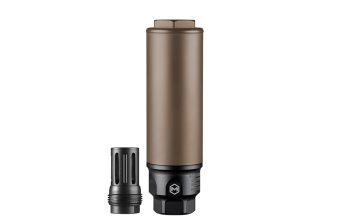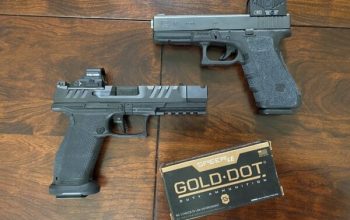![Ballistic Advantage Pistol Barrel Review [Hands On] Ballistic Advantage Pistol Barrel Review [Hands On]](https://gundigest.com/wp-content/uploads/Ballistic-Advantage-5-768x512.jpg)
We run a Ballistic Advantage Pistol Barrel in a Glock and Glock clone to see if it perfects perfection.
Gun culture is rife with extra doodads and whatsihoozits; some of them useful and others useless. Allow me to explain why an aftermarket barrel falls into the former category.
First and foremost, the component potentially offers greater accuracy than your stock barrel—the case with the new Ballistic Advantage Glock 19 barrels I tested.
Secondly, barrel upgrades may offer some more desirable features compared to what came in your gun. This is especially true if you live in a state that allows suppressors or as I like to call them, “whisper pickles.”
Finally, there’s there is plain old vanity—you want a cooler-looking pipe for your pistol.
Suppressor-Ready Pistol Barrels
Many if not most consumer-grade pistols come with an unthreaded barrel for one of two reasons. First off, it’s illegal in some states, but mostly it’s due to the machining required for fluted/spiral fluted/dimpled/etc. barrels and the machining required for threading. In short, it’s more expensive and would drive the cost of the pistol up. It’s basic economics.
Ballistic Advantage Pistol Barrel Specs
Ballistic Advantage barrels come in a variety of finishes, from oil slick to copper to QPQ and DLC, and are made of 416R hardened stainless steel. The twist rate is 1/10”, meaning for this gun, you will get almost a ½ rotation before the bullet exits the barre
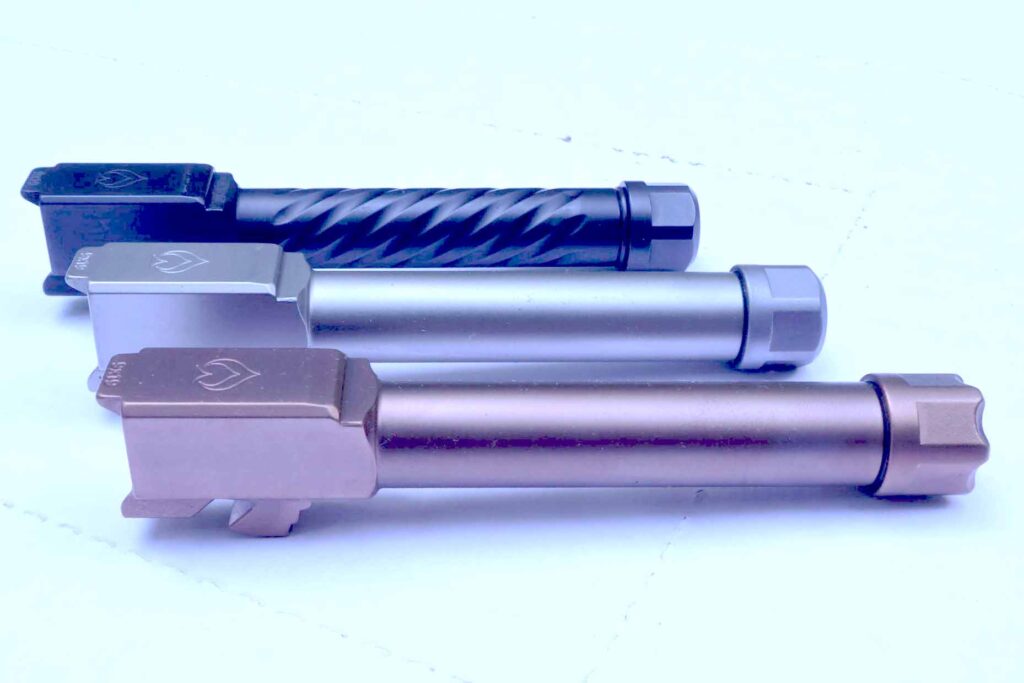
The barrels are fluted, standard, or “bomber” style, with complex machining all over. Barrels tip the scales at just around 3 ounces, and sports either a standard or aggressive “skull crusher” thread protector, in addition to an O-ring. Below is a picture of the two pistols and factory ammo used for data collection.
The barrels are tumbled at Ballistic Advantage and then sent out for PVD treatment (for the colored options) and QPQ for the black nitride option.
Ballistic Advantage Pistol Barrel Fit And Finish
The fit and finish on these aftermarket barrels are remarkable, as is their packaging. They come in a nice foam-lined box, with a piece of clear plastic encasing the barrel. It reminds me a bit of Apple packaging, in that even the box tolerances are tight and it takes some jiggling to get the barrels free. The barrels also fit snugly into both a stock Glock and MR920. The stock Glock barrel undoubtedly has more “slop” than the Ballistic Advantage barrel.
The finishing on these barrels is fantastic, with the colors being true-to-name. The copper is legitimately copper, gray is gray, and the black DLC is a deep black. These barrels also come with very nice thread protectors in both a standard thread protector with an O-ring, or what they call a “Skull Crusher” which is a thread protector with some aggressive machining on the end. The copper barrel pictured below has a “skull crusher” thread protector.
Direct mount suppressors thread on cleanly and smoothly, as they should, and stay affixed. There isn’t any grit like with some threading that is as cleanly machined.
Why BA Started Making Pistol Barrels
Adam Wainio, President of Ballistic Advantage, gave the writer some insight as to the “why” behind jumping into the pistol barrel market.
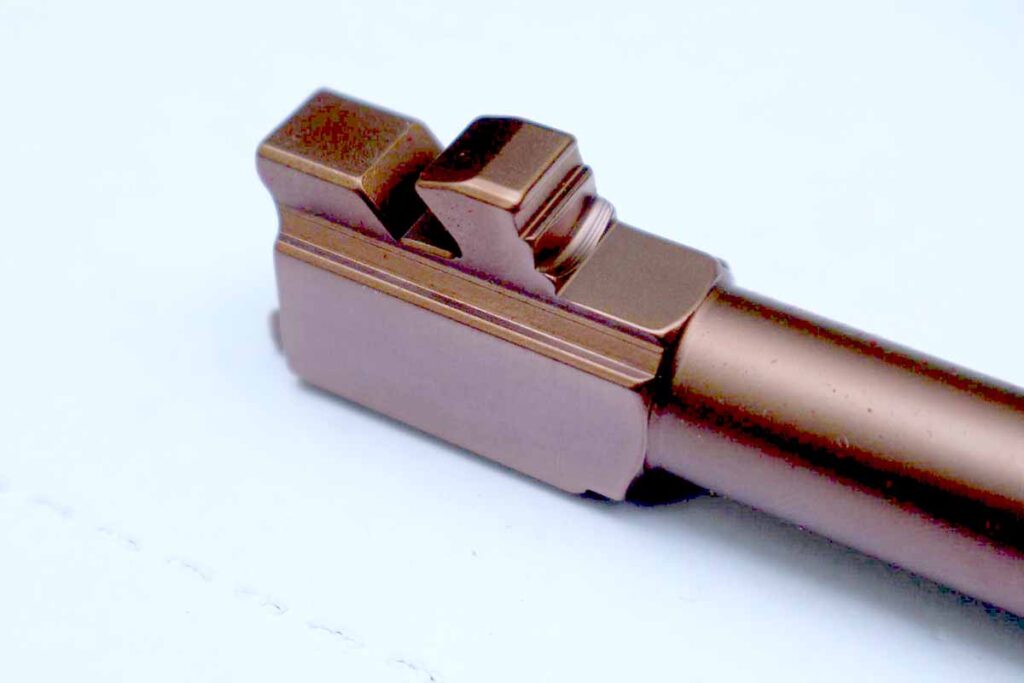
“We didn’t just want to simply offer another barrel to market. It was imperative there had to be a functional improvement. As we were doing market research, and 3D scanned a large variety of barrels, we were very surprised to see a drastic difference in tolerance between each brand, especially when compared to factory [barrels].
“We decided to stay true to Glock’s design while optimizing certain angles. The most obvious expression is the chamfered corners and increased angle of the breech hood. This design prevents the normal wear you see on a factory barrel, resulting in a more consistent breech unlocking and locking,” Wainio explained.
His explanation is in line with the basic accuracy testing conducted.
“We kept hearing about the necessity to follow a break-in process with a new aftermarket barrel before the gun would cycle reliably,” Wainio said. “This was shocking to me, for a customer to obtain some of the other desired features, such as threading and or fluting one would have to remove a perfectly reliable factory Glock barrel, and then introduce a less reliable optional. It was crucial to us that our barrel was drop-in ready, and reliable from day one, all while offering other features such as flutes and threading.”
Ballistic Advantage Pistol Barrel Accuracy
I tested these Ballistic Advantage barrels on two different platforms to collect data for this article.
For testing, I have data against a Glock 19 Gen 4 with a stock barrel and a Shadow Systems MR920 unthreaded barrel and RMR mounted. Admittedly, the Ballistic Advantage barrels are roughly a half-inch longer than the stock pipes. All shots were taken from a Caldwell pistol rest at 10 yards.
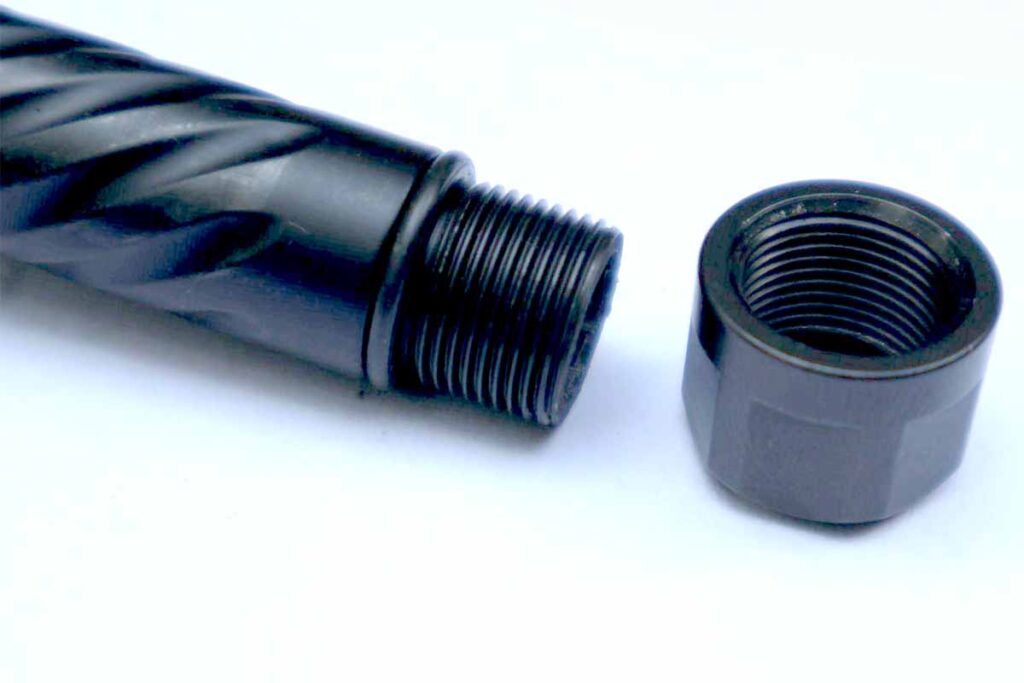
I used 4 types of ammo: 2 factory loads,147 Grain PMC and 147 Grain Winchester Target (admittedly it was slim pickings at my local gun shop). I also tested against my 147-grain flat point reloads using Boudreau’s bullets loaded with 3.1 grains of Winchester 244, and 125 grain round nose polymer coated bullets with 3.5 grains of Winchester 244.
A series of 5-shot groups were fired at the targets, and the types of ammo were noted. The Shadow Systems MR920 boasts a match-grade barrel, and this particular barrel has between 5,000 and 10,000 rounds through it. The Glock 19 barrel has likely less than 2,500 rounds. The Ballistic Advantage barrels were tested brand new.
The results are pictured below.
| Ammo | Pistol | Stock Group (Edge to Edge in inches) | BA Barrel Tightest Group in Inches | Delta Gain (Stock vs BA) in Inches | |
| 147 Grain PMC Bronze | Glock 19 Gen 4 | 2.4 | 1.66 | .74 | |
| 147 Grain Winchester White Box | Glock 19 Gen 4 | 1.54 | 1.29 | .25 | |
| 147 Grain FB Handload | Glock 19 Gen 4 | 2.7 | 1.7 | 1 | |
| 125 Grain RN Handload | Glock 19 Gen 4 | 3.39 | 1.25 | 2.14 | |
| 147 Grain PMC Bronze | Shadow Systems MR920 | 2.17 | 1.52 | .65 | |
| 147 Grain Winchester White Box | Shadow Systems MR920 | 1.48 | 2.03 | .53 | |
| 147 Grain FB Handload | Shadow Systems MR920 | 1.54 | 2.09 | -.55 | |
| 125 Grain RN Handload | Shadow Systems MR920 | 1.75 | 1.57 | .18 |
Ballistic Advantage Results
As you can see from the results, by and large, the threaded Ballistic Advantage Barrels have much better accuracy for all types of ammo involved—from factory 147 PMC and Winchester to reloads for plinking. The Winchester had the best overall accuracy, with the 125-grain reloads being the worst performer. That said, if you remove a flier here and there from most of the accuracy results, some groups were as small as .5 MOA, with plenty of shots linking on target. In only two instances was the Ballistic Advantage barrel outperformed by a stock barrel (highlighted in bold).
Ballistic Advantage Barrel Price
You can snag a Ballistic Advantage pistol barrel for between $150-$225, but Ballistic Advantage/Aero/Stag Arms (all the same ownership) do have sales very often.
The company makes barrels for four different Glocks (and their clones): The subcompact Glock 26, Compact Glock 19 (tested), Full Size Glock 17 and Practical/Tactical Glock 34. In addition, it has a line of Sig Sauer barrels for the P365 and P320, if you shoot a plastic fantastic other than a Glock. Additionally, they have a blemish sale at the time of this writing, so you can score one for likely cheaper than outlined above.
Parting Shot
For the price point, Ballistic Advantage Glock pistol barrels are good to go. They are finished well, machined cleanly, and wildly accurate due to the tight tolerances. Also, the customer service is second to none: I got a barrel that was not performing, and they replaced it immediately. Since then, all these barrels have performed wonderfully. They come in a variety of colors and configurations, both threaded and non-threaded, and are ready to take a stock gun to the next level or add a bit of flair for your “freedom seeds” to your most recent build.
More Glock Upgrads & Accessories:
![Ballistic Advantage Pistol Barrel Review [Hands On]](https://survivalism.turnkeywebsitesforsale.com/wp-content/uploads/2024/08/Ballistic-Advantage-Pistol-Barrel-Review-Hands-On-1170x780.jpg)
